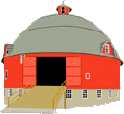SEGMENT: FARM WORK, CROPS, & LIVESTOCK
Hal Ringland>UIS Collection N-R>UIS Collection N-R, Segment 14
| <-Previous Segment | Next Segment-> |
- FARM WORK
- Discussion of "threshing days" & use of steam-powered thresher, cutting wheat with binders, shocking wheat, & how neighbors (8 nearby farmers) all helped each other out during harvest. Threshing day followed by threshing dinner. "The women would go all out to have…. Everything was good and lots of it." Mentions trouble getting horses to stay alongside threshing machine. "Those were the good old days."
- CROPS
- Mentions average productivity of wheat (about 15 bushels) was better than 8 nearby farmers. Productivity is better today, but you have to put a lot of money into fertilizers, etc. Had less corn. Corn & beans are main crops today. Average corn productivity was 35 bushels/acre, today we expect over 100. But today we put on a lot of fertilizer. Corn was picked by hand. Hal did not like shucking corn.
- FARM EQUIPMENT
- Corn then put in corn cribs to dry. Description of how corn crib was built. Mentions sheller & taking corn to elevators. Change over to tractors started in 1936. Hal gave up horses in 1950.
- LIVESTOCK
- Hal discusses how to see a good horse. Look in their eyes to see if it is a good horse. Also inspect legs for blemishes. Story about fellow trying to sell a bad mule with bad knee. Some defects may not effect horse or mules ability to work, but it will effect their value if you try to sell it.

